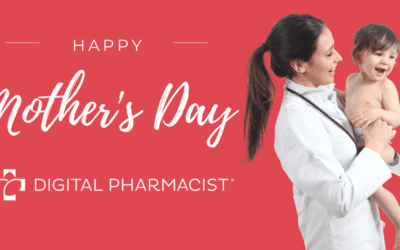Optimizing your website design can improve your patients’ online experience, but most importantly, it will increase website engagement, including medication refills. Here are a few best practices to follow when designing a pharmacy website.
1) Simplify Your Navigation
According to Hick’s law, the more options you give someone, the longer it will take them to make a decision.
Presented with too many options (navigation items and dropdown menus with too many choices), the brain is overwhelmed. This can lead to limited action or no action at all. As a result, people will often leave a website instead of trying to figure out where all of those links lead.
So, how does Hick’s law apply to your pharmacy website?
When designing your website, consolidate information into distinct categories and include general information about each subcategory in one place. For example, create one single page that lists out all the services you offer. Users can see everything your pharmacy provides without having to click around the website.
Read more on how you can apply Hick’s law to your website design.
2) Scrolling Is Natural
A lot of research has focused on website scrolling patterns, and the results are in — everyone scrolls.
Some people prefer to have the content for the entire page visible with no scrolling necessary. While it is important to provide actionable content above the fold (the area visible before scrolling), such as navigation, store location, pharmacy hours and a call to action (such as a button to refill your medications), you should not feel that all of your information needs to be visible without scrolling. Scrolling is intuitive and expected from web users.
One benefit of scrolling is that users are more inclined to stay focused on the topic without the distractions of clicking around. If you structure the content on your website strategically, scrolling can be a positive experience for users.
Check out a few of these case studies disproving the myth that people don’t scroll.
3) White Space Is Great
Incorporating white space (the space where there is no content; also called negative space) into web design improves the ability of users to do the following:
- Identify distinct sections and actionable items
- Effectively navigate and comprehend content
Segue Technologies outlines some of the main advantages of using white space in web design, such as increased content legibility and interaction and the ability to highlight calls to action, among other advantages.
Read the full article on white space in web design.
4) Add a Human Touch
In this age of digital, human connection does not have to be lost.
To establish an emotional connection with your patients, try adding a personal image of yourself or your staff on your website. When you establish an emotional connection online, your patients will find your pharmacy more personable and relatable.
5) Use Short Sentences and Paragraphs
Long paragraphs with detailed descriptions of services or lengthy information on specific products can overwhelm users.
Instead of lengthy paragraphs, focus on providing general information and short descriptions. These strategies help users gather the information they need in order to make a quick decision about whether that piece of content is something they’re interested in.
Best practices for developing content:
- Eye-catching headlines
- Short paragraphs
- Simple descriptions (only the most pertinent information)
- Visual cues
- Understandable vocabulary
Pharmacy Website Design Questions? We’re Here to Help.
These are general rules and insights, and there are always exceptions. But sticking to these guidelines is a step in the right direction to ensure a simple and effective experience for patients on your pharmacy website.
If you have any design questions, don’t hesitate to ask. We’re happy to consult with you and find the best solution for any issue you may be having. Give us a call at 877-959-7550 or email us at connect@digitalpharmacist.com.


